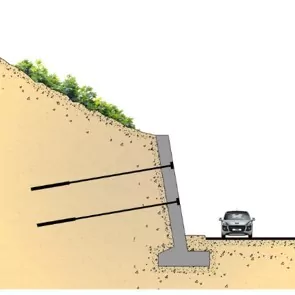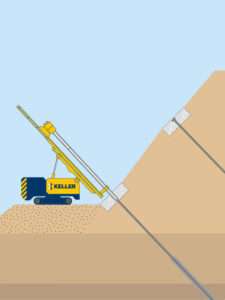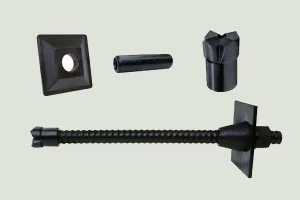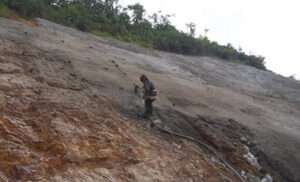Introduction
Slope stabilization is essential in preventing landslides, erosion, and structural failures in geotechnical engineering. Among the various stabilization techniques, cable anchor systems offer a highly effective and reliable solution. These systems provide reinforcement and support to unstable slopes by securing loose soil and rock masses, enhancing safety and stability. This article explores the principles, benefits, and applications of cable anchor systems in slope stabilization.
Understanding Cable Anchor Systems
Cable anchor systems, also known as rock anchors or ground anchors, consist of high-strength steel cables or rods that are drilled and grouted into the ground. These anchors provide lateral and vertical support to slopes, improving their overall stability. The primary components of a cable anchor system include:
- Anchor Head: Transfers load from the anchor to the stabilized surface.
- Tendon (Cable or Rod): Provides the necessary tensile strength to reinforce the slope.
- Grout Body: Acts as a bonding agent, securing the anchor within the drilled hole.
- Bearing Plate: Distributes the load effectively across the stabilized area.
Types of Cable Anchors
Cable anchor systems can be classified into different types based on their installation and load-bearing mechanisms:
1.Passive Anchors
- Installed and grouted in place without applying initial tension.
- Engage only when the slope begins to move, making them ideal for long-term stability.
2.Post-Tensioned Anchors
- Pre-stressed during installation to provide immediate stabilization.
- Suitable for high-risk slopes and critical infrastructure support.
3.Self-Drilling Anchors
- Feature a hollow bar design that allows for simultaneous drilling and grouting.
- Ideal for areas with loose or weak soil conditions.
Advantages of Cable Anchor Systems
Implementing cable anchor systems in slope stabilization projects offers several benefits:
- High Load Capacity: Effectively stabilizes slopes by withstanding significant tensile forces.
- Minimal Environmental Impact: Reduces the need for extensive excavation and disturbance to natural terrain.
- Versatility: Applicable in various geological conditions, including rock, soil, and mixed terrains.
- Cost-Effective: Provides a long-term stabilization solution with minimal maintenance requirements.
- Rapid Installation: Enables quick deployment, making it suitable for emergency stabilization efforts.
Applications of Cable Anchor Systems
Cable anchor systems are widely used in various geotechnical and civil engineering applications, including:
- Slope Reinforcement: Strengthening slopes in landslide-prone areas.
- Rockfall Protection: Securing loose rock formations to prevent hazardous rockfalls.
- Retaining Wall Support: Enhancing the stability of retaining walls in excavation sites.
- Bridge and Tunnel Construction: Providing additional support to structural foundations.
- Mining and Quarrying: Stabilizing excavation sites in mining operations.
Installation Process
The installation of cable anchor systems follows a systematic approach to ensure effectiveness and durability:
1.Site Assessment: Conducting geotechnical analysis to determine anchor placement and specifications.
2.Drilling: Creating boreholes at predetermined locations.
3.Anchor Insertion: Placing the tendon or cable within the drilled hole.
4.Grouting: Injecting grout to secure the anchor and improve soil bonding.
5.Tensioning (if required): Applying pre-load to enhance stabilization.
6.Final Testing and Inspection: Ensuring the anchor system meets design specifications and stability requirements.
Conclusion
Cable anchor systems provide a reliable and efficient solution for slope stabilization, ensuring safety in geotechnical applications. Their ability to enhance slope integrity while minimizing environmental impact makes them a preferred choice in engineering projects worldwide. By selecting the appropriate anchor type and installation method, engineers can effectively mitigate slope failure risks and promote long-term stability.






